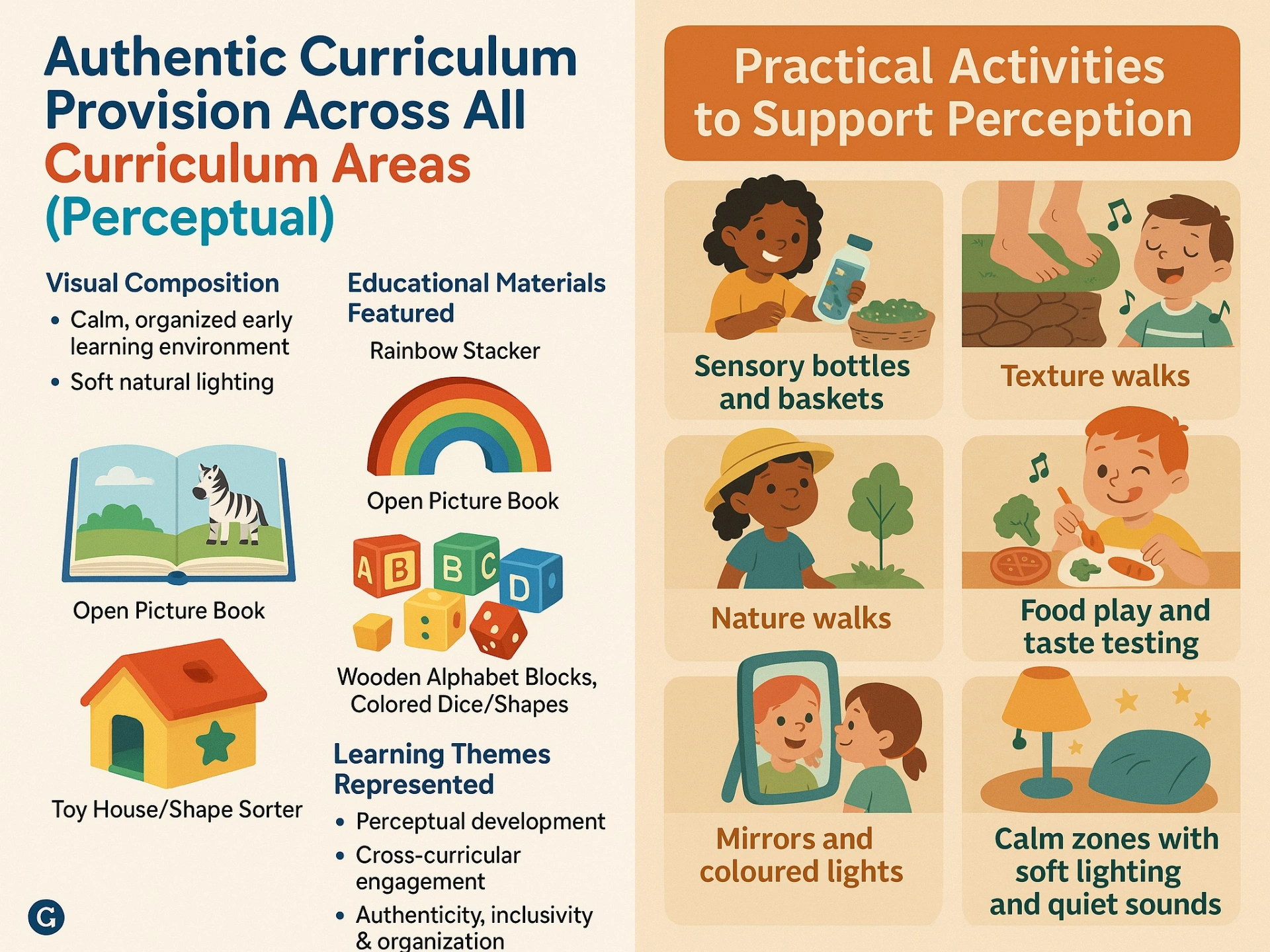
Exploring the world through the senses
Perceptual development is how young children use sight, sound, touch, taste, and smell to make sense of their world. It’s deeply connected to cognitive, motor, emotional, and language development (Berk & Meyers, 2015).
Learning Opportunities

Infants (0–12 months)
Infants respond to voices, sounds, touch, and movement. They explore by mouthing, grasping, and visually tracking objects. Gentle singing, soft textures, and colourful toys help build trust and curiosity (Soper, 2023).
Try this: rattles, music, tummy time on textured mats, and mirrored play to support early sensory learning.

Toddlers (1–3 years)
Toddlers seek more complex sensory input—like rough/smooth textures, new smells, or sounds in nature. Activities like sand play, walks, or dough exploration support memory, coordination, and attention (Sheridan, 2021).
Interaction tip: Use phrases like, “Can you hear the wind?” or “Feel how squishy this is!” to support language and observation (Soper, 2023)

Theory Connection
Jean Piaget’s Sensorimotor Stage (0–2 years) explains how infants learn through sensory input and movement. Repeating sensory experiences helps them build memory and meaning (Piaget, 1952).

Curriculum Provision
Activities Collection
See you later Alligator
Sleeping bunnies